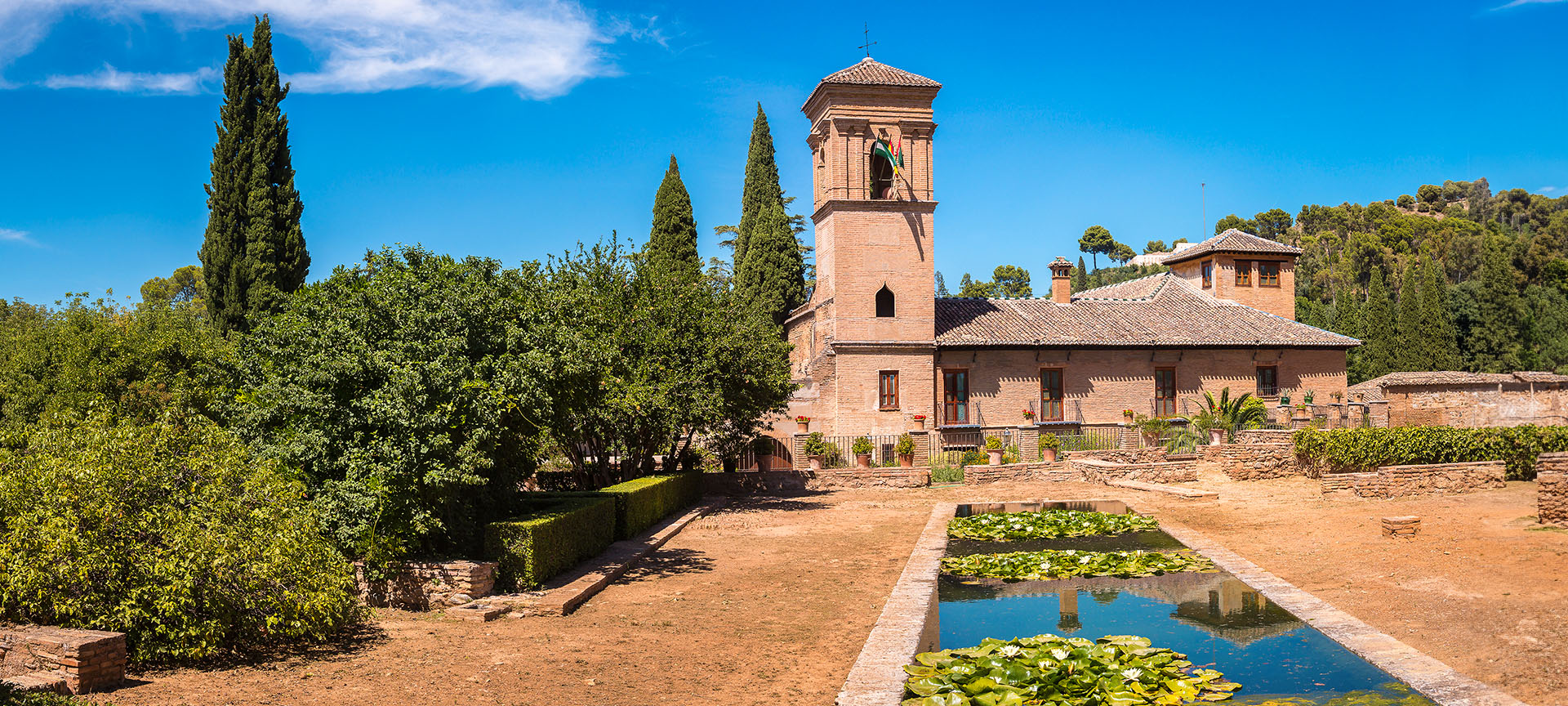
10 Paradores in buildings with a lot of history
When planning a vacation, choosing the best place to stay is important. What if you could also do it in a unique place, surrounded by art and details full of history? The Paradores of Spain offer you special accommodation in historic buildings that inspire admiration even before you set foot inside. These are some of those spaces that transform a trip into a memorable experience.
Debe activar Javascript para poder utilizar este servicio
-
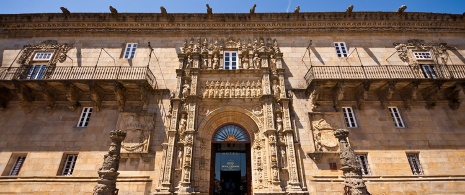
Parador de Santiago de Compostela (Galicia)
It is located next to the cathedral, in the very same Obradoiro square of Santiago de Compostela. Considered the oldest hotel in Spain, the Hostal dos Reis Católicos was founded in the 16th century to accommodate pilgrims on the Camino de Santiago, as the Latin inscription on its façade attests. Inside you will find filigree stonework and ironwork; four courtyards and the beautiful chapel between them; as well as elegant hallways and rooms, and a collection of paintings with more than 140 works by 20th-century artists from the famed Escuela de Madrid.
-
Parador de Leon (Castile and Leon)
This is the former convent and pilgrim hospital of San Marcos, one of the most impressive monuments in Leon. Its spectacular Plateresque façade is just a preview. Inside, it has been renovated in a modern style, in which past and present combine to create very special corners such as, for example, the Chapter House, the café or the terrace on the banks of the river. Its exceptional art collection includes outstanding antique pieces, including the 16th-century choir stalls, along with works by contemporary artists such as Eduardo Chillida, Fernando Zóbel and José Vela Zanetti.
-
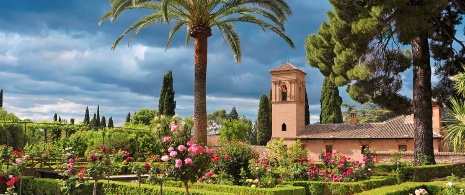
Parador de Granada, Andalusia
The wish to spend the night in the Alhambra of Granada comes true thanks to this parador, situated in the 15th century convent that the Catholic Monarchs built in the Nasrid palace of the Infantes. With evocative spaces where the Arabic and Christian elements blend, its views of the Generalife gardens are spectacular. It still preserves the original courtyard, transformed into a cloister; the Arabic room and the qubba, under whose stalactite-like decorations the first tomb of the Catholic Monarchs was situated until they were moved to the Royal Chapel.
-
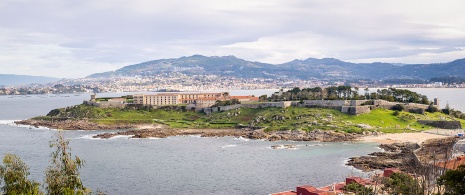
Parador de Baiona (Galicia)
This parador occupies the old fortress of Monterreal, south of the Rías Baixas, which was attacked by the pirate Francis Drake in 1585. With an architecture halfway between a medieval castle and a Galician stately palace, it enjoys a spectacular location in the bay of Baiona, where you can even see the Cíes Islands in the distance. Deserving special mention is its majestic stone staircase and its immense garden, as well as its exterior wall: walking along the wall at dawn or dusk, taking in the view the Atlantic Ocean, becomes one of the best moments of the day.
-
Parador de Zafra (Extremadura)
Nine towers with battlements clearly identify the building of the parador, in the historic center of the Extremaduran town of Zafra. This is the Alcázar of the Dukes of Feria, a palatial residence built in the 15th century that was originally a Moorish fortress. Inside, you can see the coffered ceilings, ironwork, handrails and decorative elements that have been preserved from the old noble house. Getting swept up in a feeling of nobility is inevitable when you have breakfast in its interior marble patio or enjoy the views of the city and its natural surroundings from the terrace.
-
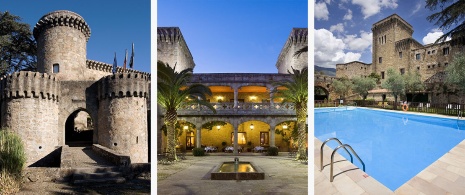
Parador de Jarandilla de la Vera (Extremadura)
Among gorges, natural pools and chestnut forests lies the ancient castle-palace of the Counts of Oropesa in Jarandilla de la Vera. It is the site that Emperor Charles V chose to reside for several months after his abdication, before settling in the Monastery of Yuste. It still preserves the original moat and wall, as well as the unique Gothic gallery of the great parade ground. Its carefully designed décor, its lounges with fireplaces and its seasonal outdoor pool provide a true haven of tranquillity.
-
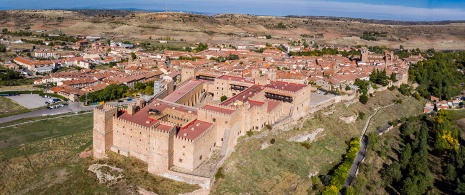
Sigüenza Parador (Castile-La Mancha)
The medieval castle that houses it is a must-see in Sigüenza. Its impressive silhouette dominates the city, and when you set foot inside, you find yourself in a true palace. The truth is that this 12th-century fortress served as the habitual residence of kings, cardinals and bishops for a long time. Today it is a place that takes you back in time as you walk through its cobbled courtyard, enter its 13th-century Romanesque chapel, look out from the wooden balconies of the rooms or sit in the vaulted dining room.
-
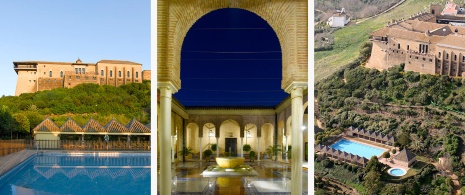
Parador de Carmona (Andalusia)
This parador is located about 30 kilometers from Seville, at the highest point of the city of Carmona. The building of the Parador is a renovated Andalusian-style palace, which stands within the grounds of the 14th-century Arab fortress known as the Alcázar del Rey Don Pedro. Mudejar motifs are the main feature of its most inspiring spaces, such as its interior patio with fountain, the Salón Bermejo or the old refectory, now a restaurant. Not to mention the exceptional panoramic views from every corner, and in particular from the pool and terrace.
-
Parador de Ciudad Rodrigo (Castile and Leon)
Its spectacular location makes it an ideal enclave to admire the monumental richness of Ciudad Rodrigo. On a hill above the river, it occupies an emblematic place in the town: the castle rebuilt by Henry II of Castile in 1372. Its large keep, square in shape and measuring 17 metres on each side, is one of its most notable elements, along with its walls, machicolations and battlements. Inside, you will find traditional Castilian furniture alongside modern pieces, displaying a decoration that preserves the medieval essence of the fortress.
-
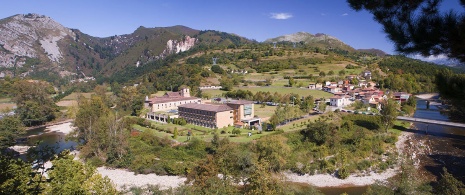
Parador de Cangas de Onís (Asturias)
The ancient monastery of San Pedro de Villanueva stands on the banks of the River Sella, surrounded by the spectacular landscape of the Picos de Europa and just two kilometres from Cangas de Onís. It is said that the parador was built in the mid-8th century by the third king of Asturias, Alfonso I, at the request of his wife. The complex, in addition to housing the rooms of the inn, also includes the 13th-century Romanesque church, one of the best Asturian examples of this architectural style, with impressive scenes on the capitals of its façade.
Travel plans for inspiring you










